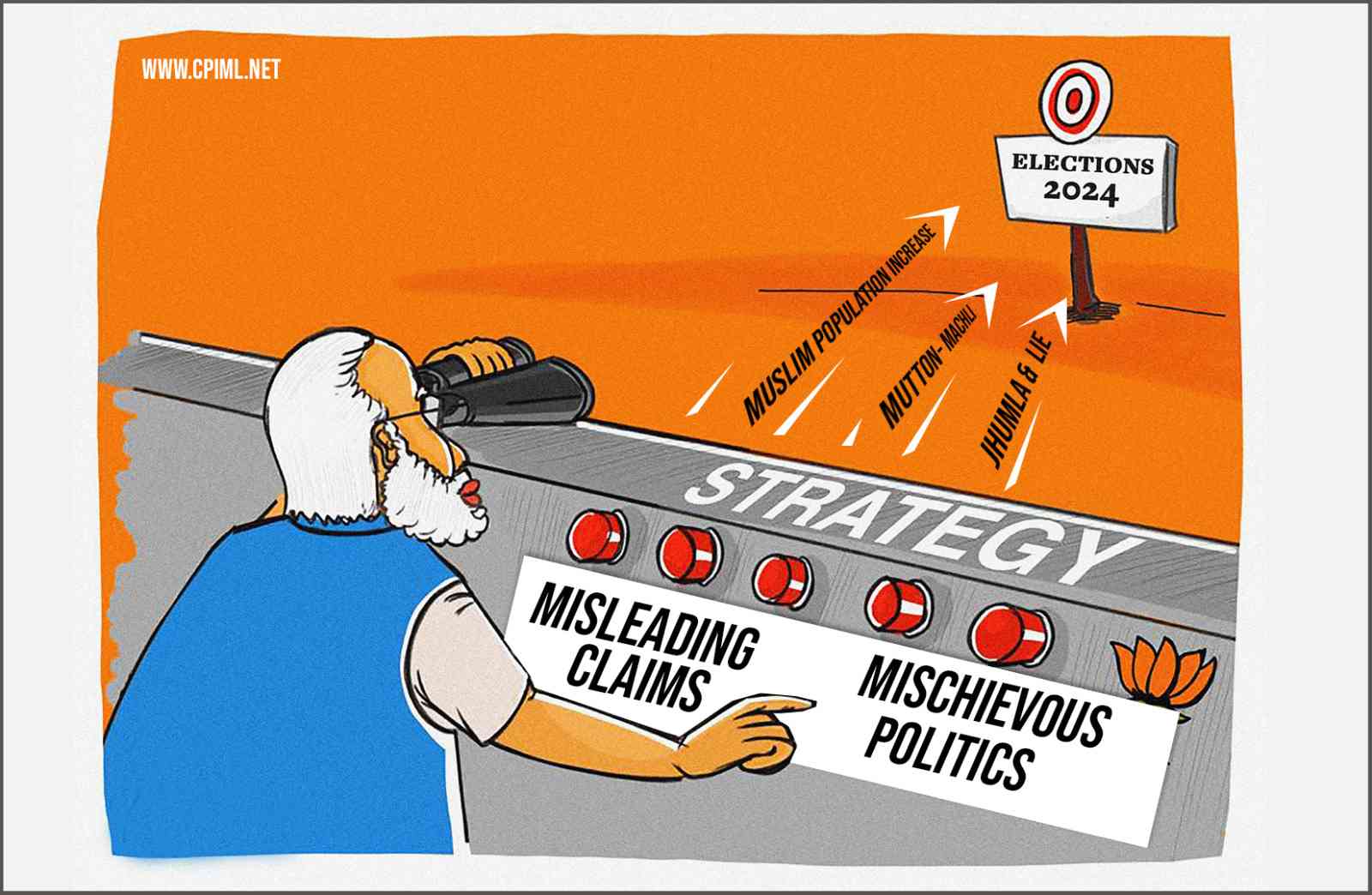The EAC-PM Paper on Religious Minority Population in India: Misleading Claims, Mischievous Politics

On 7 May when the third phase of the ongoing elections was taking place in India, the Prime Minister's Economic Advisory Council (EAC-PM) issued a working paper ostensibly to present a comparative study on the changing share of religious minorities in 167 countries of the world between 1950 and 2015. The study found the changes in India consistent with the global trend and the decline in India's religious majority (from 84.68% in 1950 to 78.06% in 2015) much less significant than the average rate of decline globally and especially in the developed countries of the world. The global average decline according to this cross-country study of 167 countries is 22% and that of the 35 OECD (Organisation for Economic Cooperation and Development) countries is 29%.
The working paper did not analyse the diverse factors driving the changing population composition in different countries, and instead focused only on the accumulated outcome as reflected in the changing demographic pattern. Fertility rate observed in different communities (which relies primarily on the economic circumstances and educational levels - the poor with lower access to education showing greater fertility than their well-off and more educated counterparts), migration and conversion are the major variables that generally explain the changes apart from the possible impact of more specific social or historical circumstances. The working paper seeks to explain the demographic picture as a proxy for the overall conditions of different communities. The increase in the proportion of Muslims in India is presented as an argument that the minorities in India are not just protected, they are actually thriving.
If the world has been expressing concern about the state of religious minorities and religious freedom in India, it is because of the ground reality of a relentless campaign of hate and violence against Indian Muslims. Even the ongoing elections are witnessing a most virulent anti-Muslim hate campaign being spearheaded by none other than the Prime Minister himself. The EAC-PM paper itself is also being used to serve this very purpose. We remember how in the wake of the anti-Muslim carnage in Gujarat, Narendra Modi had described the relief camps as 'baby-producing factories'. He even coined the highly inflammatory and toxic slogan 'hum paanch, hamare pachees' (we number five, our children twenty-five) to target the Muslim community by invoking the bogey of polygamy and population explosion.
It is now well established that the total fertility rate within the Muslim community is declining more rapidly than in other communities and gravitating towards the national average. While the Muslim population in India had grown by 29.3% between 1991 and 2001, the rate fell by 5% to 24.4% over the next ten years. Had the Modi government not abdicated its responsibility to conduct the 2021 census, we would have had updated figures to combat wild speculations and mischievous propaganda about India's demography. The 2001 and 2011 census had also punctured the propaganda about the so-called influx of Bangladeshi Muslims in Assam and West Bengal. According to post-1991 census data, Muslim population in West Bengal has actually grown at a rate lower than the national average.
Globalisation of capital and production cannot but result in increased immigration. Most developed countries have strong policy restrictions to discourage immigration while rightwing politics across the world revolves around virulent anti-immigrant prejudices and violence. As many as 2,25,620 Indians gave up their Indian citizenship and adopted foreign citizenship in 2022. We now also have frequent reports of Indians being sent back on charges of illegal immigration. The inescapable conclusion is that more and more Indians are trying to settle down abroad. If the OECD countries display a major reduction in the relative strength of the religious majority and a corresponding increase in the strength of religious minorities, we must remember that Indians are also contributing to this change in growing numbers.
The liberation war of Bangladesh and the accompanying socio-economic and political turbulence caused major demographic changes in the region in the 1970s. In recent past Bangladesh has acquired a high degree of demographic stability, and is doing better than India in terms of many social and economic development indices and has a total fertility rate lower than India's. While population propagandists in India remain fixated about Bangladesh, much less attention is paid to Sri Lanka where Sri Lankan Tamils, mostly Hindus, were subjected to a genocidal war resulting in a 5% decrease in Hindu population and a corresponding rise in the numerical strength of the Buddhist community. The discriminatory and divisive Citizenship Amendment Act which ostensibly addresses the issue of persecution of religious minorities in Bangladesh, Pakistan and Afghanistan, remains conspicuously silent about the developments in Sri Lanka.
It is really shameful and ominous that the Economic Advisory Council to the Prime Minister is being used to serve the sinister political agenda of the Sangh brigade. On the 75th anniversary of India's independence we saw the PM's principal economic advisor openly advocate a new constitution to replace what he called Ambedkar's outdated constitution. And now in the guise of a cross-country analysis of 167 countries, this EAC-PM paper seeks to supply ammunition to the BJP's virulent anti-Muslim campaign being spearheaded by the PM himself. The Malthusian outlook of treating India's population as a liability has led to many policy blunders in India. The focus on religious composition of Indian population is a clear case of misplaced emphasis when India demands meaningful employment policies to reap the demographic dividend that is being wasted away and a caste census to pave the way for more inclusive policies of representation to dent India's deeply entrenched system of social injustice and inequality.
Charu Bhawan, U-90, Shakarpur, Delhi 110092
Phone: +91-11-42785864 | +91 9717274961 E-mail: info@cpiml.org

